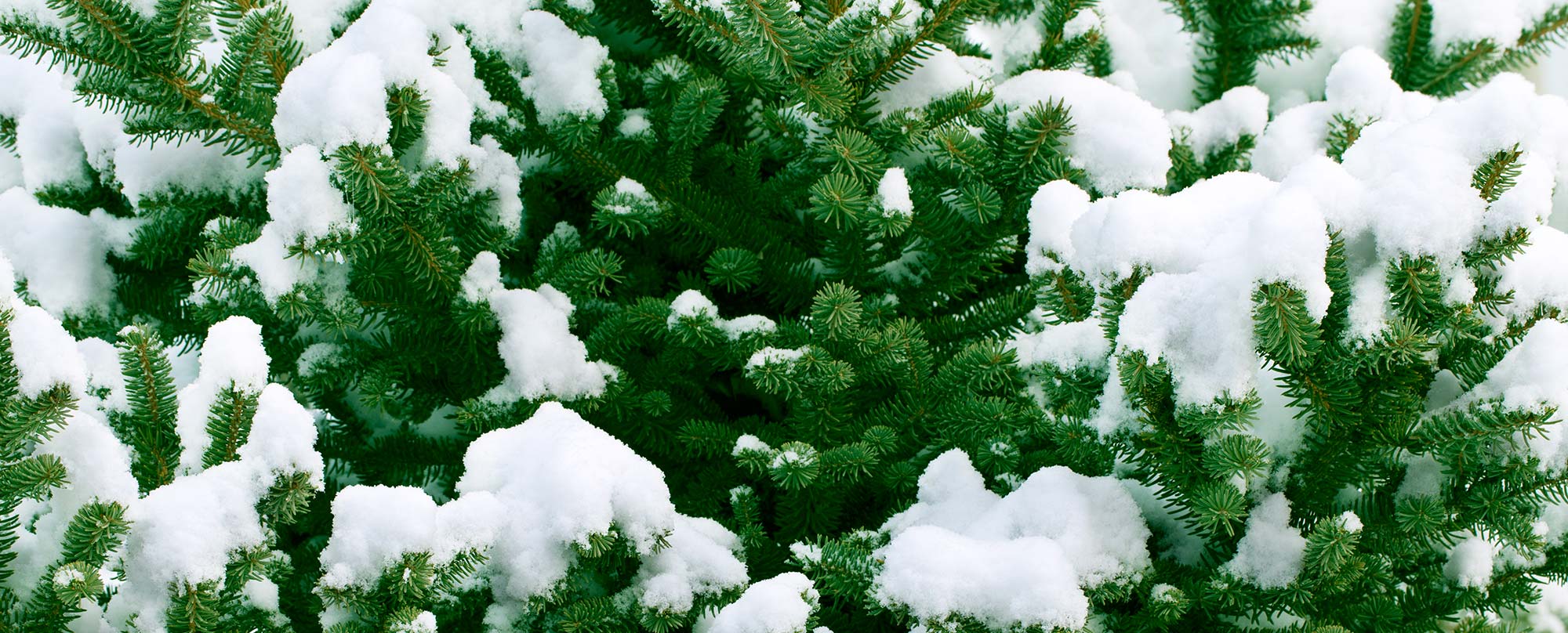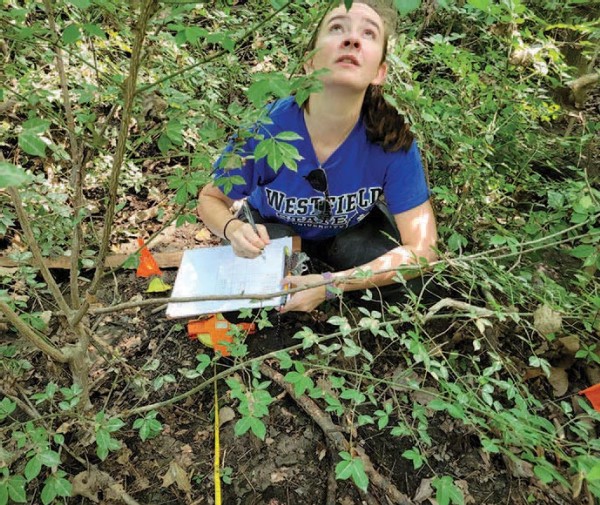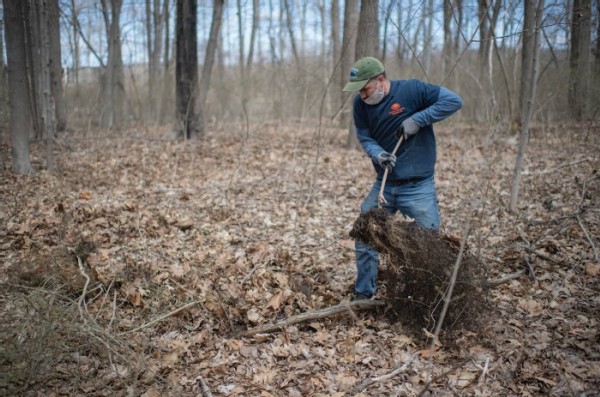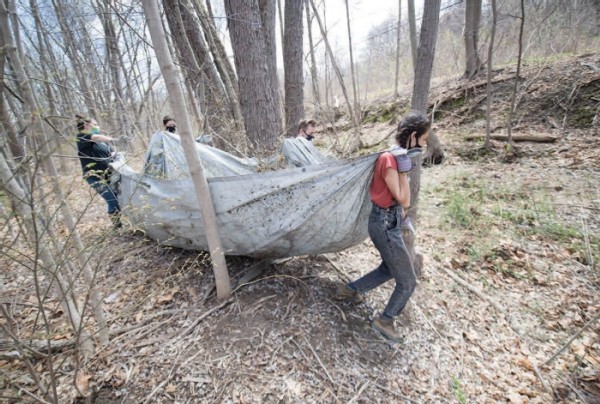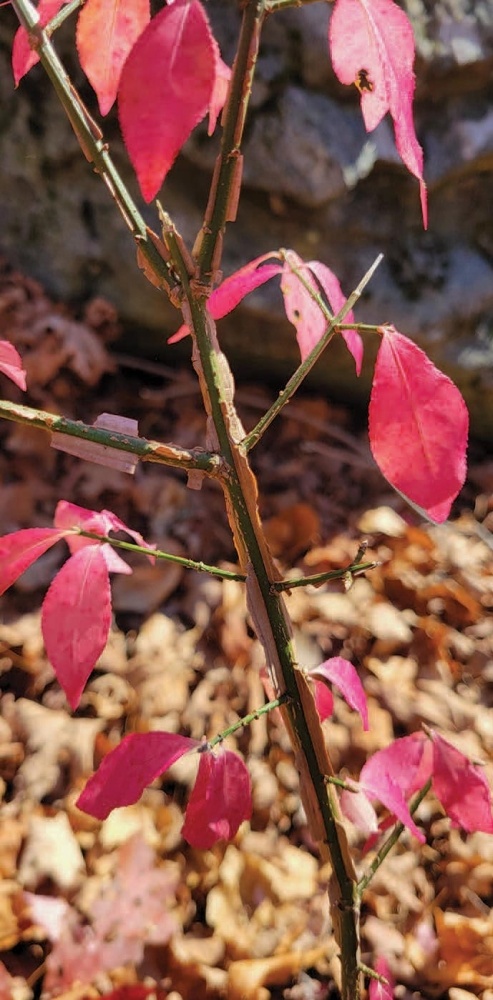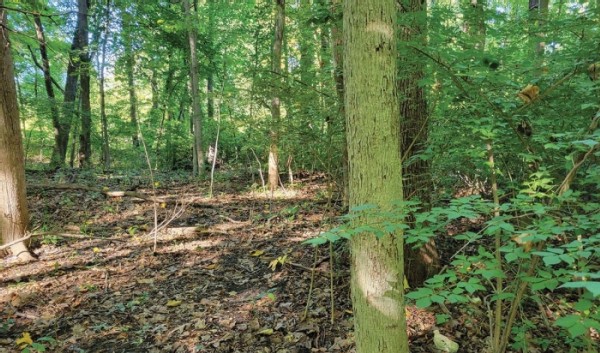
Burning bush (Euonymus alatus), native to East Asia, first arrived in the eastern United States in the late 1800s. It’s an attractive plant, with corky, winged green stems and opposite leaves that turn bright red in the fall. This distinctive appearance, and the plant’s extreme hardiness, have made it popular for landscaping throughout the Northeast. Unfortunately, this plant often moves out of yards and invades surrounding woodlands.
Burning bush grows rapidly, is shade tolerant, and has bountiful berries (up to 8,000 a year on older, larger shrubs), allowing it to quickly dominate a forest understory. Under ideal growing conditions, it outcompetes native plant species for space and available water, and it grows thick enough to shade out competitors. Today, the plant is established in 34 states, and its range is expanding westward.
At Westfield State University in Massachusetts, where I teach, students from the Restoration Ecology Minor in the Environmental Science Department are tackling a burning bush invasion. The university campus abuts the Westfield River, a major tributary of the Connecticut River, and burning bush dominates the floodplain forest’s shrub layer. Thanks to the work of student Nic Pietroniro, the university obtained state permits for invasive removal near the river. The permits cover a five-year period (2021 to 2026), with the opportunity for extensions.
Students began burning bush removal in April 2021. Removal early in the growing season, before new berries develop, is imperative, because later removal is likely to scatter berries, causing further spread. Students used two main techniques to remove plants: root removal (either pulling small stems by hand or using a Pullerbear weed puller) or cutting using a chainsaw or loppers. While the students used root removal whenever possible, for shrubs with stems greater than 2¼ inches or those growing on the riverbank, where the local conservation commission was concerned that soil disturbance might cause erosion, they instead cut plants to approximately 10 inches in height. Because the plant’s cut stems and other debris can re-root in moist conditions, the students removed all cut vegetation from the site and burned it. All told, the students cleared approximately two of the five targeted acres.
This project allowed the students to assess which removal technique was more effective, both in terms of decreasing the abundance of burning bush, and allowing native vegetation to establish. To make this comparison, the students set up long-term 1-meter radius plots: some as controls (no treatment, where the invasive grew freely), some where students removed plants by pulling, and some where they used only cutting.
Environmental science student Amber Stearns monitored the plots throughout 2021. Every two weeks during the growing season, she counted and identified every germinating plant. She found that there was no difference in burning bush seedling abundance between the root removal and cutting treatments, and that in both types of treated plots, significantly fewer burning bush seedlings germinated than in control plots. She also documented more native species establishing in the treated plots than in the control plots. Although these results suggest that either root removal or cutting is effective in the short-term, in the past year, we have seen sprouting from the cut stems.
Based on our results, for a small burning bush invasion, we recommend extensive root removal, followed by periodic inspections of the area to ensure there is no resprouting. For larger invasions, repeated cutting and herbicide treatment may be necessary to control the plant. In the future, as defined in our permits, we will be using Triclopyr 4, an herbicide that targets woody plants, to dab on any large stems that resprout.
The project continues, and this past spring, 20 new students cleared an additional acre of burning bush, primarily using root removal. During the next few years, students will continue to remove burning bush and other invasives along the Westfield River and Westfield State University campus and will monitor the reestablishment of native plants, as well as tree growth and wildlife use.
